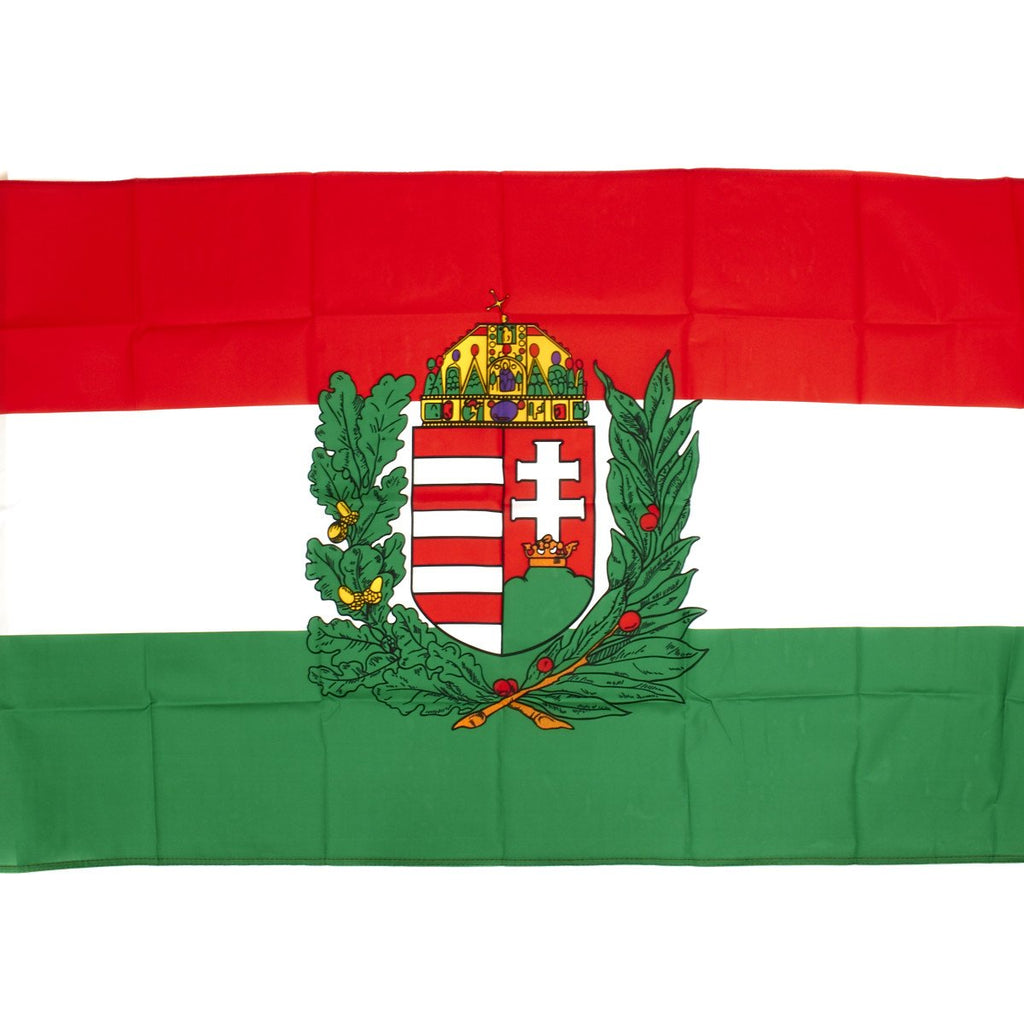Item Description
New Made Item: Quality 3' x 5' flag. Ready to display. Complete with 2 hang side Grommets. Recommended for indoor use only; Synthetic.
The Royal Hungarian Army (Hungarian: Magyar Királyi Honvédség, German: Königlich Ungarische Armee) was the name given to the land forces of the Kingdom of Hungary in the period from 1922 to 1945. Its name was inherited from the Royal Hungarian Landwehr which went under the same Hungarian title of Magyar Királyi Honvédség from 1867 to 1918. Initially restricted by the Treaty of Trianon to 35,000 men, the army was steadily upgraded during the 1930s and fought on the side of the Axis powers in the Second World War.
On 5 March 1938, Prime Minister Kálmán Darányi announced the Gyor Programme that envisaged the investment of a billion pengo over 5 years on the expansion of the armed forces. This was probably aimed at securing a rapid agreement with the Little Entente states on arms equality, something that was achieved by the Bled agreement in August 1938. The reorganization of the army began on 1 October 1938 under mobilisation plans Huba I-III. In the seven military districts, the mixed brigades were now grouped into corps of three brigades each (from February 1942, light divisions).
In November 1938 after the First Vienna Award, Hungarian troops occupied the disputed areas of Slovakia and Carpatho-Ukraine. In the occupied region an eight corps was established. After the break-up of Czechoslovakia in March 1939, the whole of Carpatho-Ukraine was occupied and, a little later, following the brief SlovakHungarian War, a strip of land in East Slovakia.
That year conscription was re-introduced. A new military service act forced officers with a Jewish parent to withdraw from active service. The remaining Jews, along with members of other national minorities and politically unreliable soldiers, were sent to serve in unarmed labour battalions.
In March 1940, three field army commands (Armeeoberkommando) were formed, each of three corps, together with the Gyorshadtest ("Rapid Corps"). The Chief of the General Staff now took over the military command that had previously been the responsibility of the Ministry of Defence. He was placed directly under the supreme commander, the regent (Reichsverweser).
Northern Transylvania, which had been promised to Hungary, was occupied in September 1940, after the Second Vienna Award and a ninth corps established there. On 20 November 1940, Hungary joined the Tripartite Pact.
Although minister president, Pál Teleki, had signed a friendship and non-aggression treaty with Yugoslavia in December 1940, in March 1941 Hungary allowed the German Wehrmacht to march through Hungarian territory. On 11 April 1941, following Telekis' suicide and by AH's invitation, the Hungarian 3rd Army joined the Balkans Campaign in the wake of which Backa, Baranya, Prekmurje and Medjimurje were annexed.
- This product is available for international shipping.
- Eligible for all payments - Visa, Mastercard, Discover, AMEX, Paypal & Sezzle





